While Atlantic City may seem an unlikely art destination, the boardwalk has proven to have fertile and inspired soil. ARTLANTIC is the first public art installation to open in Atlantic City and features the works of artists Robert Barry, Peter Hutchinson, Ilya and Emilia Kabakov, Robert Lach, Jedediah Morfit, John Roloff and Kiki Smith. Presented in two large-scale installations- the first on a seven-acre site located at Pacific Avenue between South Dr. Martin Luther King Jr. Blvd. and South Indiana Avenue and the second on a 8,500 square-foot site located at the Boardwalk between South California Avenue and South Belmont Avenue, ARTLANTIC is a truly large-scale undertaking. Curated by Lance Fung of Fung Collaboratives in partnership with the Atlantic City Alliance (ACA), the Casino Reinvestment Development Authority (CRDA). Installation spoke with curator Lance Fung about bringing art to Atlantic City.
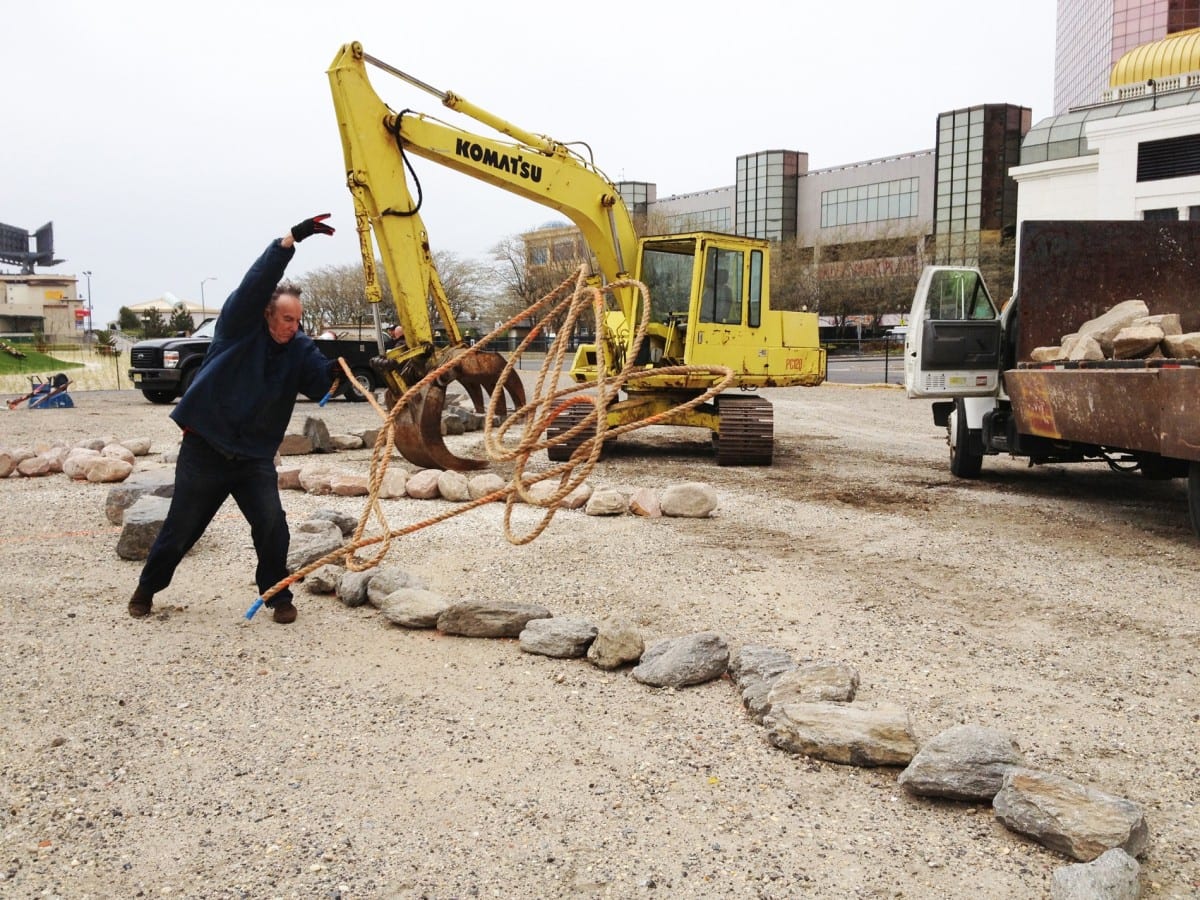
Installation Magazine: The scale of the installation is incredibly vast. What your process in preparing an installation of this size?
Lance Fung: In Atlantic City, I was dealing with an empty lot, one that was a casino in the past but was reduced to an eye sore. The first realization was to create a basic exhibition design that was inspired by my other curatorial project in Bali. I wanted the artwork to be set in an almost exotic landscape but fulfilling the local need for a green space that was safe and peaceful. A respite so to speak. I knew I wanted to create a feeling of four solo shows in which very different artworks would have some physical proximity to each other, even interact, but not in the traditional way a group exhibition would have been curated. Thus, John Roloff’s installation was perfect for the separate location. I wanted Robert Barry’s work to link the two other exhibition spaces so his work graced the entire site whereas landscape designer Diana Balmori created wonderful private spaces for Ilya & Emilia Kabakov and Kiki Smith. In the second phase of development, I had Peter Hutchinson create three of his historic thrown rope pieces and added emerging artists Jed Morfit (cast furniture relating to Hurricane Sandy) and Robert Lach (colorful bird nests for the children to play in.)
What was the logistical process of securing the space and determining the time required for each artist to create a piece?
In the first phase we barely had time to think. Fung Collaboratives was hired in May and I emailed the artists for the first phase immediately. I received their proposals within a few weeks. I discussed with each of them and had final proposals within a month. Groundbreaking was in late September 2012 and we had all the art installed by the week after Hurricane Sandy struck. It was an amazing pace. Now only ten months after the groundbreaking we are done with the hardscape, landscape and all art installation. I have never worked this quickly before nor have the artists. In one aspect it was great to move so quickly and in another it’s a bit unimaginable as we look back.
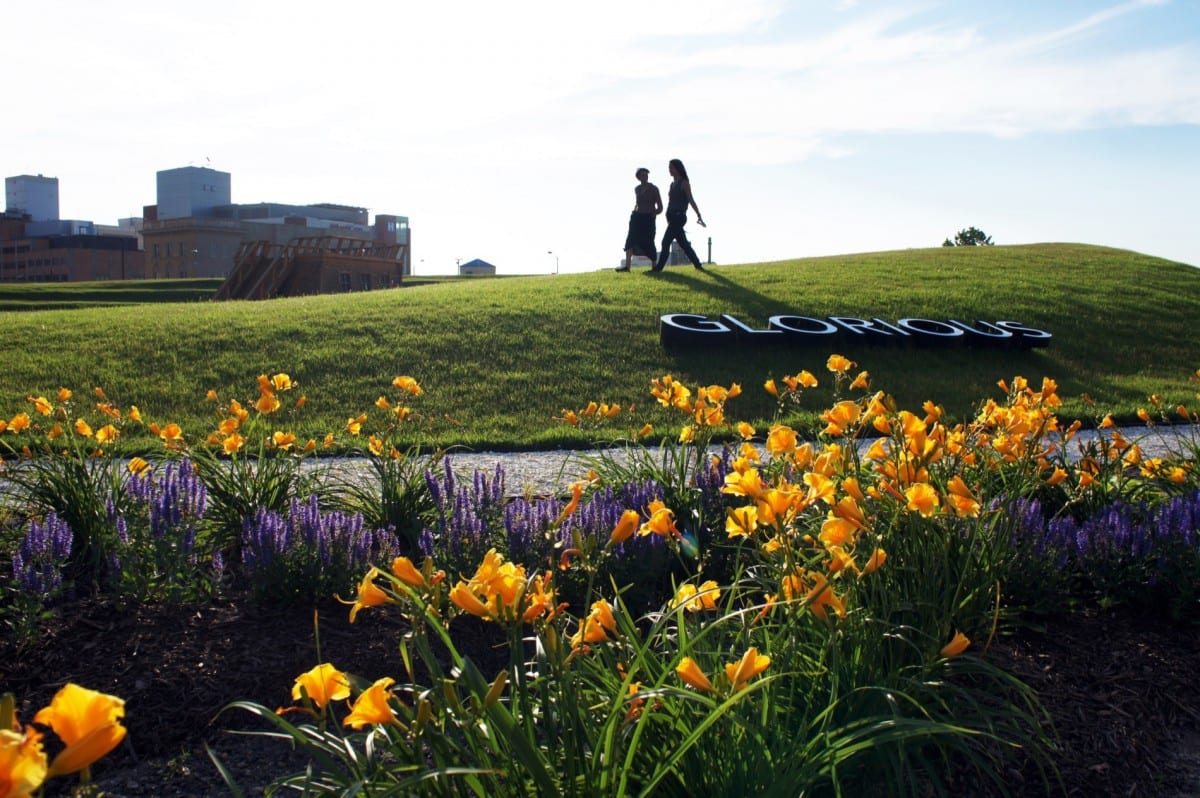
How was the space for ARTLANTIC chosen? Is the space in Atlantic City meaningful to the artists who are participating?
Both locations were determined by the organizer, Atlantic City Alliance. They have the property on loan from the land owners. When and if the time comes for the properties to be developed, the works of art will be removed and returned to the artists. The artists did their necessary research and each found a relationship to the city, the people, and the context. Each work of art is deeply rooted in an energy or comment on Atlantic City and thus are amazing site specific commissions. At the same token, the many visitors who are not art enthusiasts can still enjoy the works as they are very visual both in day and night. The Kabakov sculpture is now referred to by the locals as the playground and John Roloff’s work is a major tourist photo spot. It is a great example of how top level contemporary art can also be positive public art versus a water downed version of art.
What was your collaboration like with working with emerging and established artists?
Fantastic. Each artist challenged me and vice versa. We had lots of fun dreaming of projects and then actually realizing them. Since we were working very quickly there was no time to overwork an idea. Going with instinct, I believe, is the best approach. I have worked with all of the artists in the past with the exception of the new discoveries of Jedediah Morfit and Robert Lach. So, working with the artists again was easy and a joy. Discovering the two new artists from New Jersey allowed a different process to occur. There was more conversation on what my vision and expectation was since they did not know me. I feel we all learned a lot from each other.
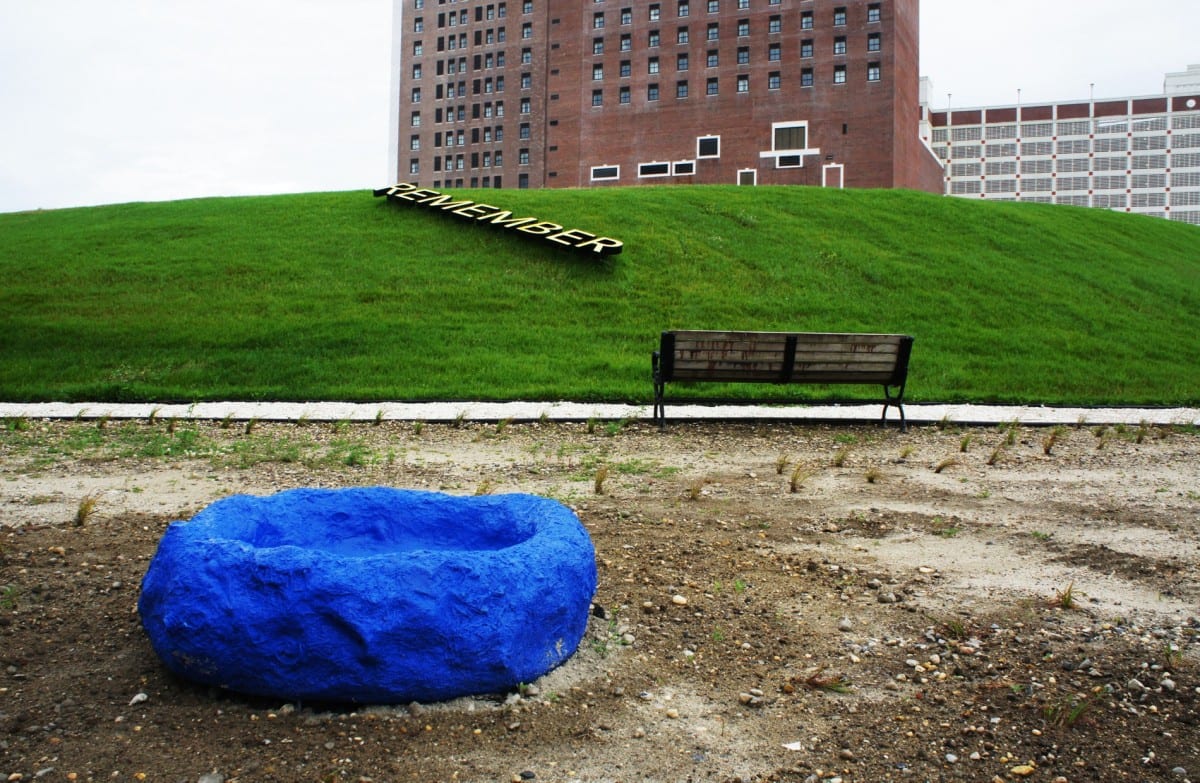
Image courtesy of Fung Collaboratives.
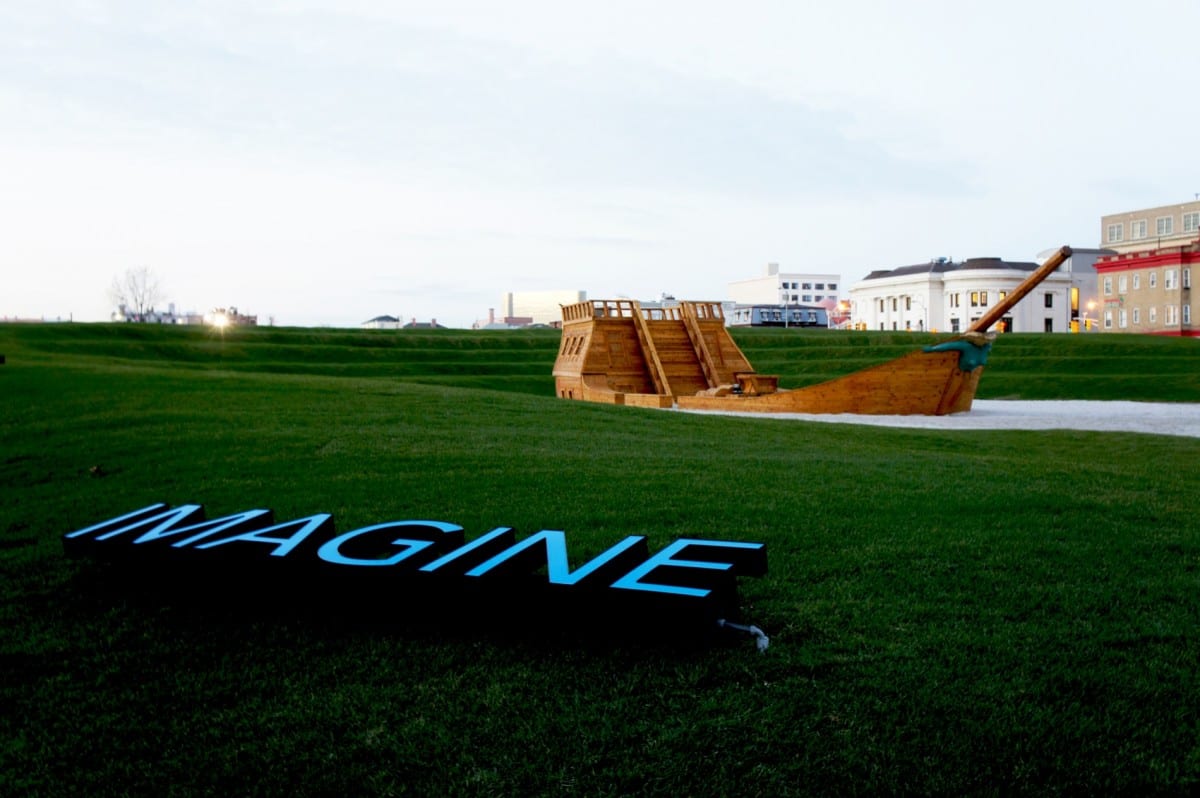
Were the artists inspired by the site, or did they work together to create a narrative around their works?
Each artist created very different works but that of course was my intention and why I invited this select group of artists. The need to bring back nature to where it once was removed was a very compelling argument for me to convince the artists to participate in ARTLANTIC.
What were the greatest challenges that the installation posed?
I think the greatest challenge is curating a high level art exhibition for a town that is lesser known for culture than other endeavors.
How do you hope the public will respond? What is the best way for the public to navigate around the vast square footage of the installation?
So far the public has embraced us. We have monthly mixers to explain, share and educate the locals on what we are doing. Stockton College’s art students have been a great resource for interns and even designing our first brochure. The painter’s union volunteered in creating the John Roloff painting for free. The local art scene has embraced us as well and hope that ARTLANTIC ignites more cultural projects in Atlantic City. I think they are pleased that this year we added artists from the region to the list of internationally renown artists. As for the experience…every individual should approach it as an adventure. Just plan enough time to stop and smell the roses.

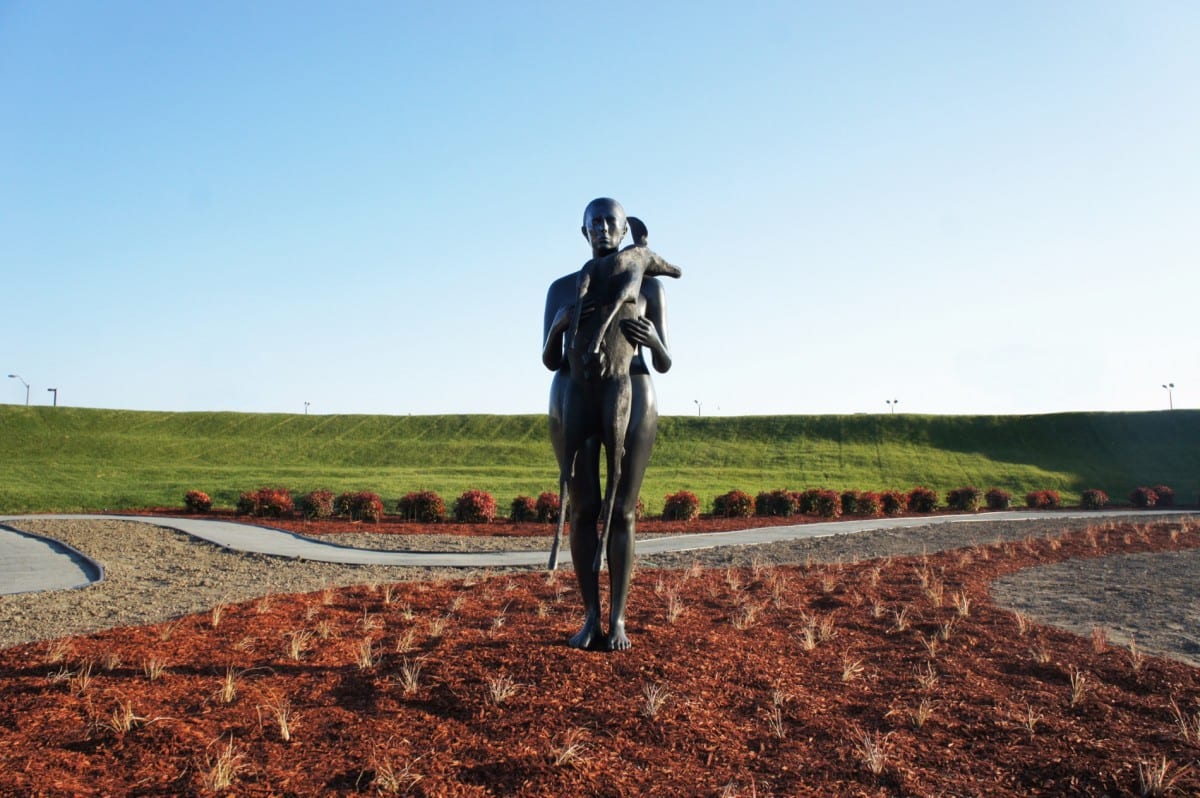
ARTLANTIC was recently chosen as one of the best 50 public art projects for 2013 by Americans for the Arts. How do you think ARTLANTIC is different than other large, site-specific installations?
This was both surprising and exciting especially since we were so highly recognized and we are barely open. Hopefully, now people from the region will come and explore and visit as everything is free. I think ARTLANTIC set itself apart because I have not viewed this as a project on public art but rather the best contemporary art currently created and gingerly placed in a designed public setting.
How long will the installation run? What are the hours of operation?
The installation will be up until the landowners request the use of their property. I am hoping it remains on view for at least a year. The hours are seven days a week: morning til’ dusk.
What have you learned in your experience of working on this great undertaking?
Despite the frenzied pace, don’t rush, meet the locals, and enjoy the process because you never know how long it will last.
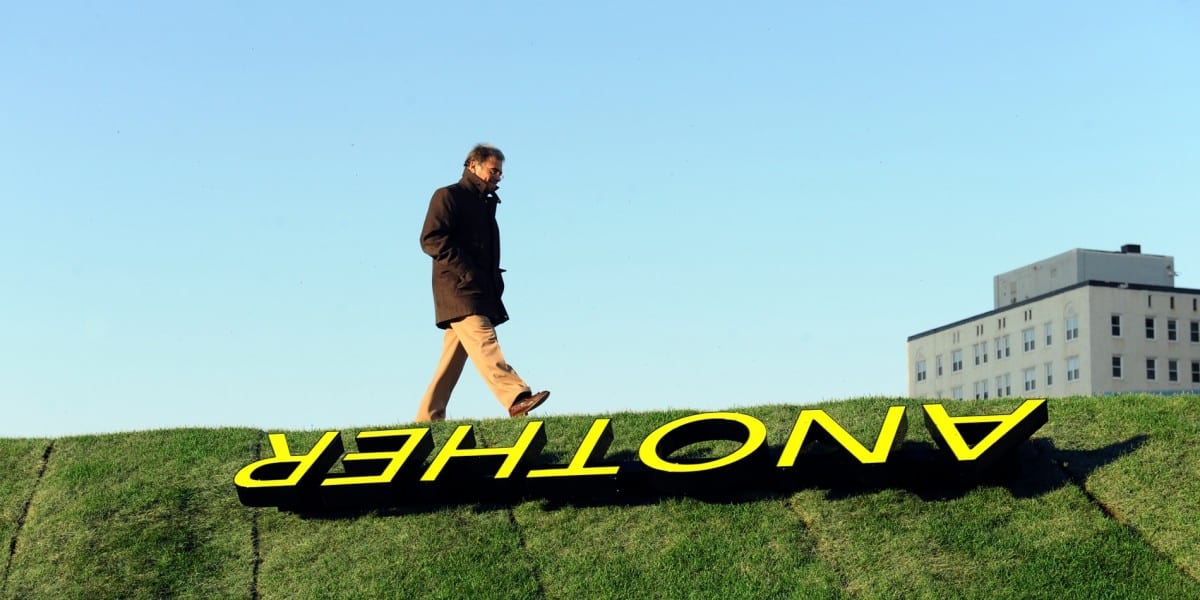
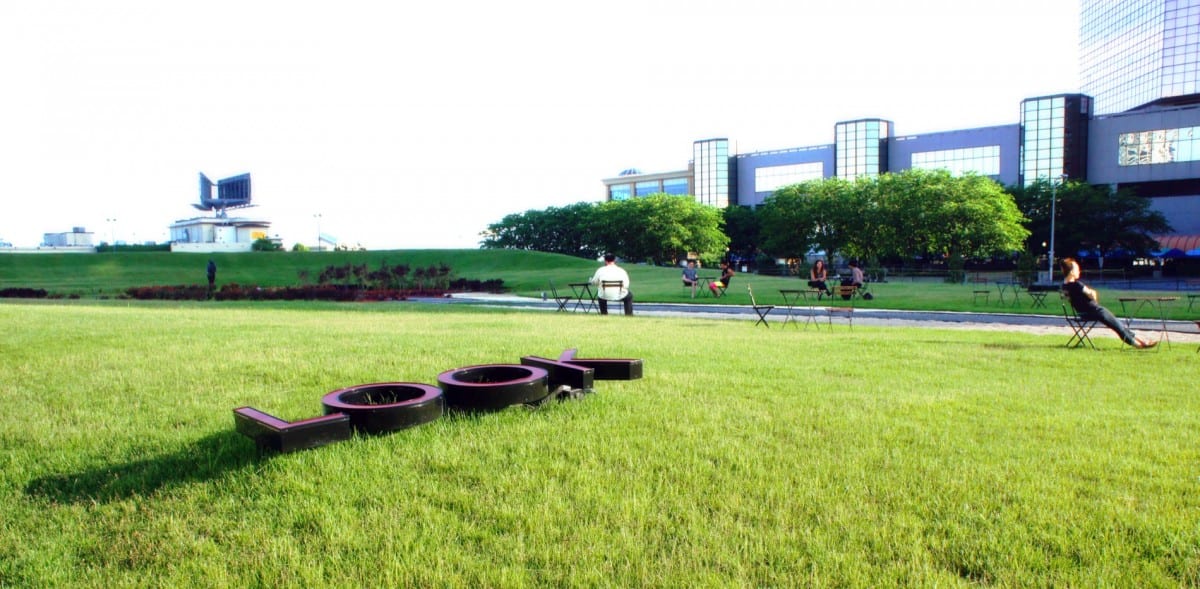
Learn more ARTLANTIC and the geography of the installations:
First Installation:
– The Barry, Kabakov and Smith installation is on a seven-acre site that will have two open spaces with two sculptures walled by 11 and 14-foot-high undulating terraces covered in indigenous grasses and wildflowers.
– The Kabokov sculpture is a large, plywood pirate ship named the Devil’s Rage. Opposite the ship is a life-sized version of Her, a self-portrait in bronze by Smith surrounded by a red-themed garden. Embedded in the landscape surrounding both open spaces is Robert Barry’s illuminated text piece.
– Peter Hutchinson makes his mark on the vast landscape with his largest Thrown Rope installation of three intertwined snakelike gardens consisting of various boulders, flowers and bushes.
– Robert Lach’s Refuge Nest Colony consisting of seven brightly colored nests sculptures encourage play and to contemplate home, community and nature.
– Jedediah Morfit’s The Flood Suite is comprised of three identical sets of highly sculpted aluminum garden furniture flooded with vignettes of city life.
– In Morfit’s Mama’s in the Arbor, a majestic woman welding a saber emerges out of a dress laced with leaves, branches and woodland animals
Second Installation: Étude Atlantis
– 8,500 square-foot site
– Bold linear stripes converge into a spiral pattern that leads to the center of the space
– The landscape design is by Philadelphia-based Cairone & Kaupp, Inc.
Featured Image: Visitors enjoying the park amidst Peter Hutchinson’s Artlantic Triple Thrown Rope floral installation, Robert Barry’s text piece and Ilya & Emilia Kabakov’s Devil’s Rage. Photograph by Layman Lee.

The outdoor environment adds another level of enjoyment to the artworks, creating a group environment as well as an individual oasis. This install allows the viewer to interact with the art as well as the environment itself.